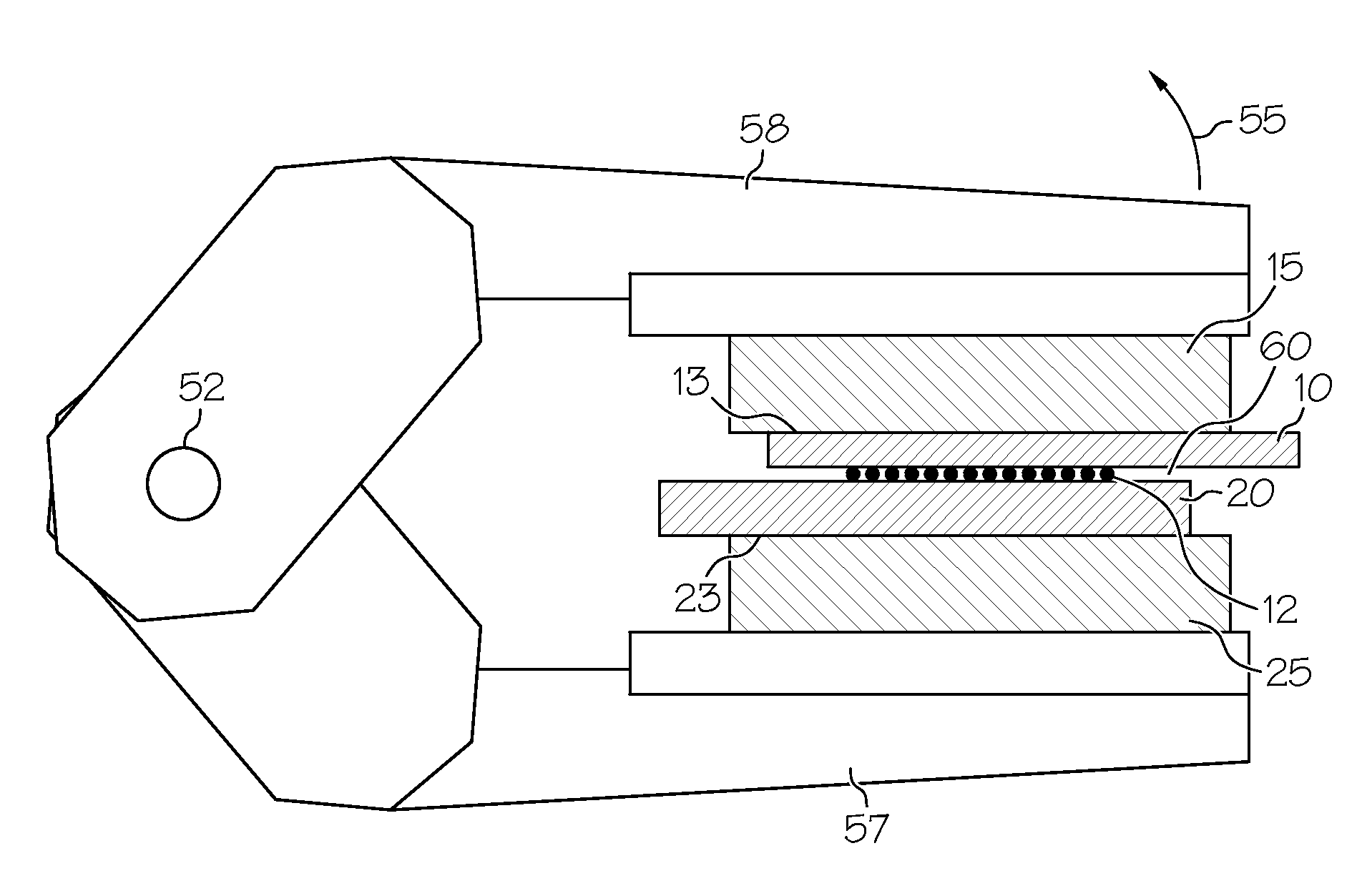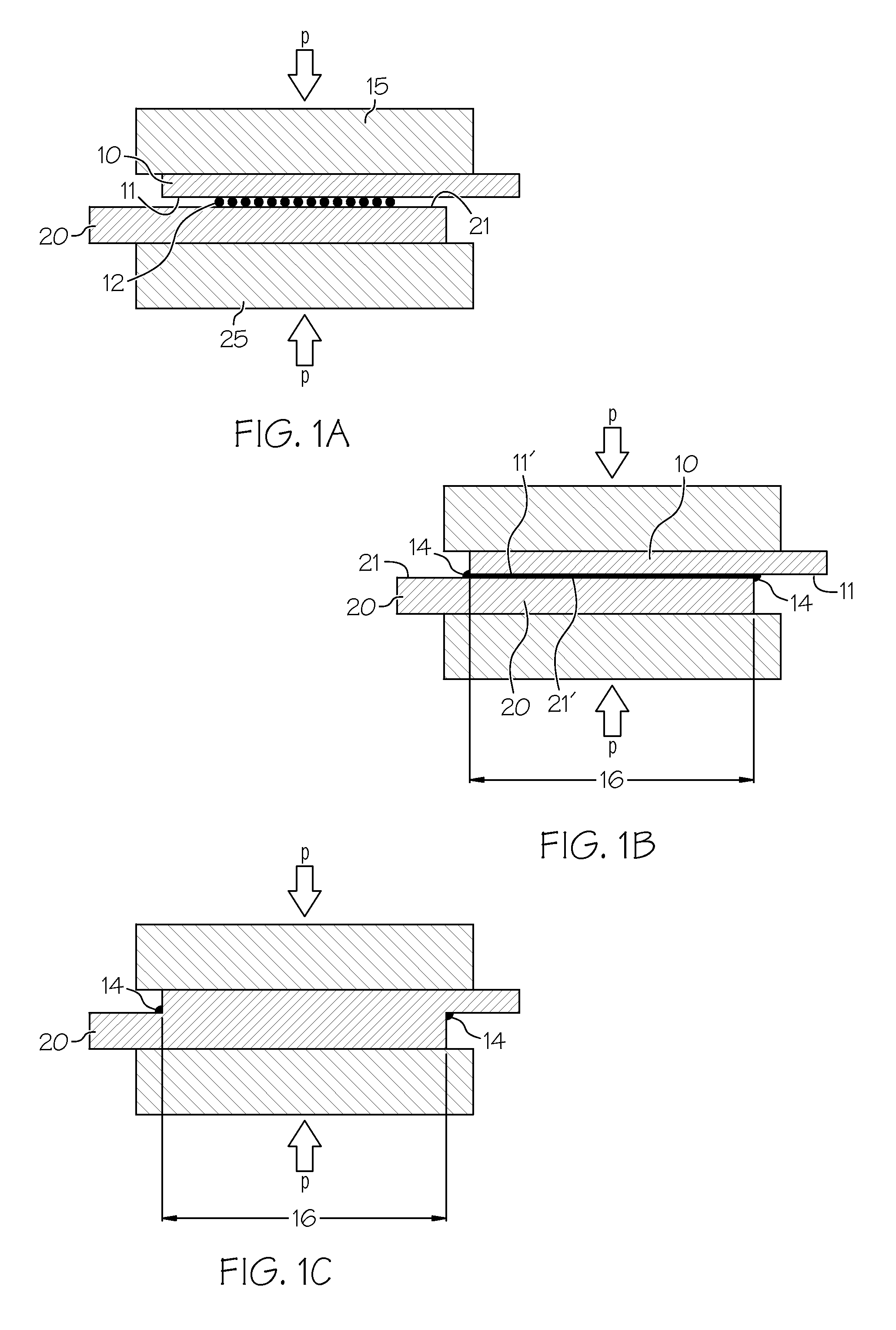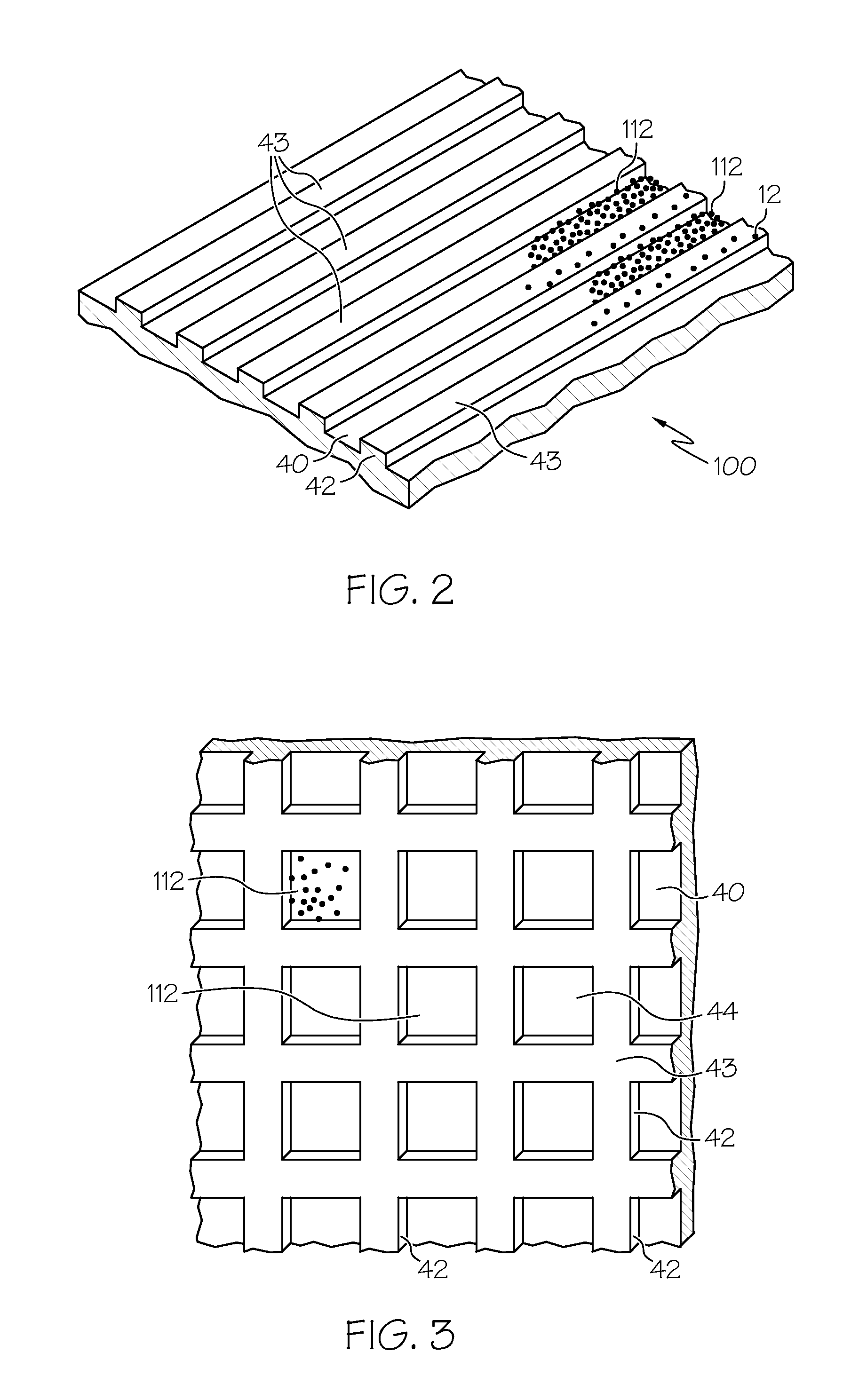Battery tab joint by reaction metallurgy
- Summary
- Abstract
- Description
- Claims
- Application Information
AI Technical Summary
Benefits of technology
Problems solved by technology
Method used
Image
Examples
Embodiment Construction
[0036]The invention relates to solid-state welding processes for joining metal or metal alloy workpieces. A reaction product comprising a mobile low-melting temperature liquid-containing material is temporarily formed between joining surfaces. The mobile material is formed as a reaction product between the surfaces to be joined and a preplaced material selected specifically for its ability to react with the base metal alloys. Under the action of an applied force, the reaction product is displaced from the joint and leaves behind cleaned, oxide-free aluminum or copper surfaces that, under continued pressure, form a metal-to-metal bond. The process is practiced to manage consumption and deformation of the facing surfaces of the workpieces.
[0037]In many embodiments of this invention, the process may be used to form solid-state welded interfaces between copper metal or alloy or aluminum metal or alloy workpieces and other copper metal or alloy or aluminum metal or alloy workpieces. Exam...
PUM
| Property | Measurement | Unit |
|---|---|---|
| Temperature | aaaaa | aaaaa |
| Thickness | aaaaa | aaaaa |
| Pressure | aaaaa | aaaaa |
Abstract
Description
Claims
Application Information
 Login to View More
Login to View More - R&D
- Intellectual Property
- Life Sciences
- Materials
- Tech Scout
- Unparalleled Data Quality
- Higher Quality Content
- 60% Fewer Hallucinations
Browse by: Latest US Patents, China's latest patents, Technical Efficacy Thesaurus, Application Domain, Technology Topic, Popular Technical Reports.
© 2025 PatSnap. All rights reserved.Legal|Privacy policy|Modern Slavery Act Transparency Statement|Sitemap|About US| Contact US: help@patsnap.com



